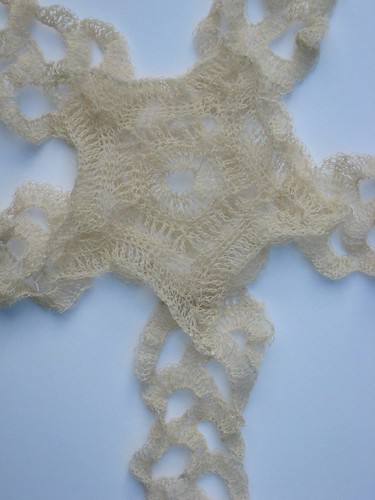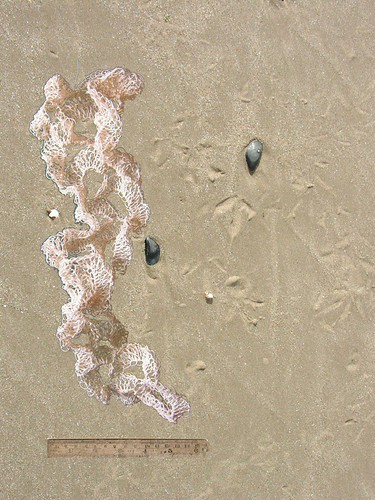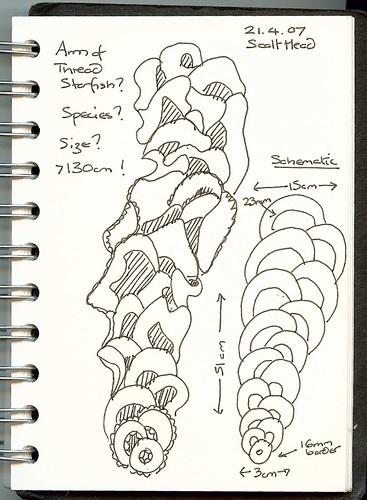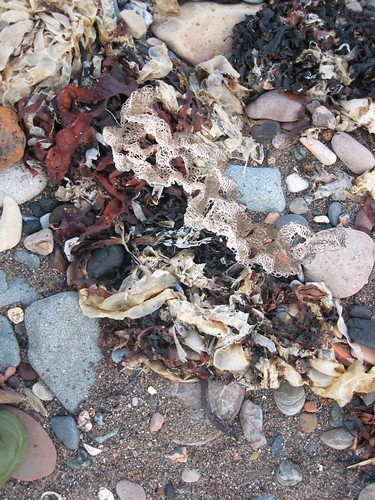
Distribution of finds as at September 11th along the North Norfolk Coast from Old Hunstanton to Scolt Head Island and Burnham Overy.
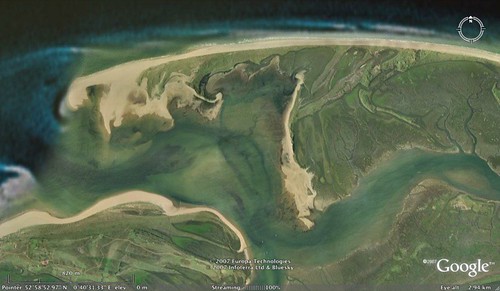
Google Earth view of Scolt Head Island, a 9km sand spit.
This blog tells the story of the discovery, examination and classification of a new class of order of starfish, Linumasteroideae, the Thread Starfish. These rare and localised species of starfish are found only along the north coast of Norfolk.
 Oral (lower) surface
Oral (lower) surface